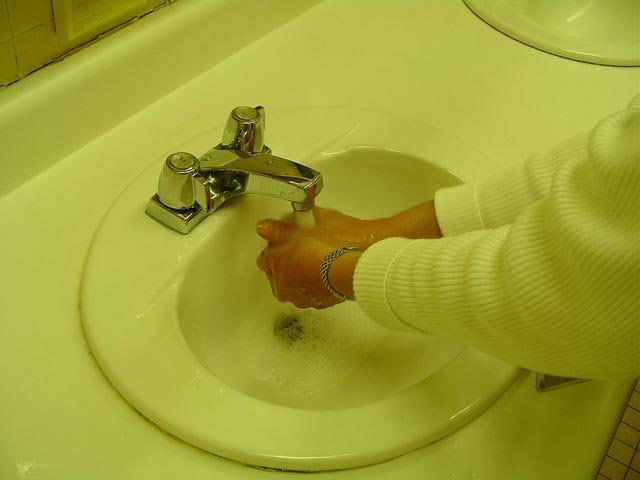Too Clean? Fight Against Germs Fuels Allergy Increase

A dose of dirt could be the best medicine for preventing allergies in kids who've never had them.
While avoiding excessive contact with germs can help prevent the spread of infections, going overboard with cleanliness could be at least partly responsible for an increase in allergies among children, mounting research suggests.
"We’ve developed a cleanlier lifestyle, and our bodies no longer need to fight germs as much as they did in the past," said Marc McMorris, a pediatric allergist at the University of Michigan Health System. "As a result, the immune system has shifted away from fighting infection to developing more allergic tendencies."
More than 50 percent of Americans ages 6 to 59 years are sensitive to at least one allergen, according to a national survey conducted from 1988 to 1994 by the National Institutes of Health. That's two to five times higher than rates found in a previous 1976 to 1980 survey.
Recent research has found evidence for the so-called hygiene hypothesis, which explains how more sterile environments can lead to higher rates of illness. For instance, scientists in Germany recently found children exposed to farm animals (and the associated bacteria and other microbes hiding out there) were about half as likely as other children to develop the autoimmune illness Crohn's disease.
More animal helpers
Allergies are a reaction by the body's immune system to foreign, yet generally innocuous, substances, including pollen, mold, animal dander, dust and certain foods that it deems harmful. If your immune system has never or rarely detected even the natural background level of such substances, it can go haywire when contact does occur.
Sign up for the Live Science daily newsletter now
Get the world’s most fascinating discoveries delivered straight to your inbox.
"Allergies are on the rise because our society has changed the way we live," McMorris said, adding that "as a result, people with allergies are having children with others who have allergies, which in turn creates a natural increase in the prevalence of allergies in our society.”
In addition to exposure to farm animals, dogs and cats kept as pets could also help children avoid developing allergies. A study published in a 2002 issue of JAMA concluded that children living in a house with two or more dogs or cats during their first year of life were much less likely to develop allergic diseases compared with children raised without pets.
"Epidemiology would suggest if there are 10 cats in the homes, [kids] are less likely to develop allergies," said Bruce Bochner, director of the Division of Allergy and Clinical Immunology at Johns Hopkins School of Medicine.
More research is needed, however, to pin down exactly what's going on. Bochner said one flaw with these studies is that homes with pet-allergic kids are not likely to have lots of pets.
The dirty truth
From the constant use of anti-bacterial soap for dish- and hand-washing to air-tight seals around doors and windows, some modern homes have become shrines to hygiene. Add vaccinations and antibiotics to the mix and the body's immune system can get too much artificial reprieve from nature.
"The natural immune system does not have as much to do as it did 50 years ago, because we've increased our efforts to protect our children from dirt and germs," McMorris said in a statement released this month.
Plus, the atrophy of family size means children get exposed to fewer germs than the more kid-filled homes of yesteryear. Families with three or more children, a dynamic that was common decades ago, tend to have fewer allergies as they are exposed to more bacteria- and virus-harboring siblings, McMorris said.
The battle against bugs doesn't have to come to an end, but finding a balance between healthy living and clean living is a must, scientists advise, although Bochner notes the jury is still out on the over-exposure approach.
"We don't know at this point whether we should be exposing people to lots of allergens at an early age and get them tolerant [or not]," Bochner said in a telephone interview. "All we really know is once you become allergic, since exposure triggers symptoms, the best way to deal with that is to reduce your exposure."
McMorris says we've gone too far though with germ-avoidance.
"I don't think we should put kids in a bubble," McMorris told LiveScience. At the end of the day, he said, parents should just let kids be kids.
- Top 10 Mysterious Diseases
- VIDEO: The Dirt on Staying Clean
- Report Card: Who Has Dirtiest Hands
Jeanna Bryner is managing editor of Scientific American. Previously she was editor in chief of Live Science and, prior to that, an editor at Scholastic's Science World magazine. Bryner has an English degree from Salisbury University, a master's degree in biogeochemistry and environmental sciences from the University of Maryland and a graduate science journalism degree from New York University. She has worked as a biologist in Florida, where she monitored wetlands and did field surveys for endangered species, including the gorgeous Florida Scrub Jay. She also received an ocean sciences journalism fellowship from the Woods Hole Oceanographic Institution. She is a firm believer that science is for everyone and that just about everything can be viewed through the lens of science.











